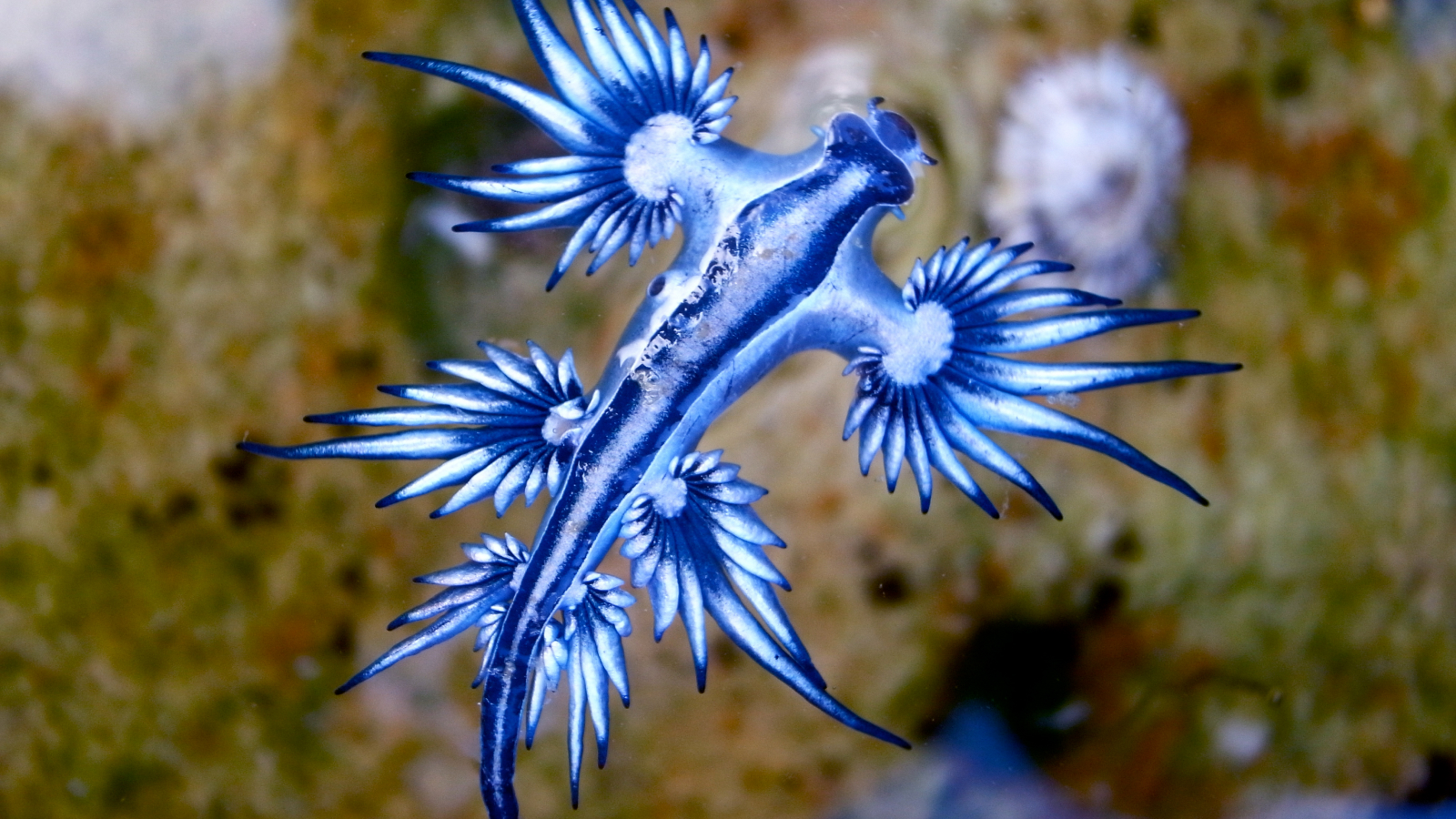Blue dragon: The deadly sea slug that steals venom from its prey
The blue dragon may be too weak to resist the ocean's current, but it can take on a Portuguese man o'war and even steal its venom.

Name: Blue dragon (Glaucus atlanticus)
Where it lives: Tropical and subtropical waters throughout the Atlantic, Pacific and Indian oceans
What it eats: Portuguese men o'war and other venomous animals
Why it's awesome: This tiny sea creature, which grows up to 1.2 inches (3 centimeters) long, is a type of nudibranch, or sea slug. Also known as a sea swallow or blue angel, it has three sets of ornate "wings" — called cerata — that makes it look a bit like a Pokémon.
Its beautiful and otherworldly appearance is down to its lifestyle. The blue dragon lives on the surface of the ocean, bobbing along using an air bubble in its stomach and the water's surface tension to keep it afloat.
It floats upside down for better camouflage: The sea slug's bright blue coloring blends in with the surface of the water from above while its silvery-gray back looks like the sky from below.
The blue dragon feasts on venomous creatures including Portuguese men o'war (Physalia physalis), by-the-wind-sailors (Velella velella) and violet sea snails (Janthina janthina).
Get the world’s most fascinating discoveries delivered straight to your inbox.
Related: Green-banded broodsac — the brain-hijacking parasite that creates disco zombie snails
The tiny creature floats on the underside of the water to approach its prey and uses a mucus layer to prevent being stung when it takes a bite with its serrated teeth and hard discs in its stomach, which provide an extra layer of defense against the sting.
The sea slug can't create its own toxins, but when it eats venomous prey it stores the stinging cells in its cerata and can release them all at once in self defense if it feels threatened. This species drifts with the current, which means they can wash up on the beach — sometimes with thousands stranding together. But swimmers and beachgoers are warned to keep their distance because the tiny critter can pack a punch.
"That's what makes them so dangerous, since they can release the stinging cells all at one time," Jace Tunnell, director of community engagement at the Harte Research Institute for Gulf of Mexico Studies, told the BBC. "It can be three times the intensity as a man-o-war due to that."
Blue dragon mating is also pretty interesting. As hermaphrodites, each individual will have both male and female reproductive organs at the same time. After mating, they lay a string of up to 16 eggs which will hatch in just a few days.

Melissa Hobson is a freelance writer who specializes in marine science, conservation and sustainability, and particularly loves writing about the bizarre behaviors of marine creatures. Melissa has worked for several marine conservation organizations where she soaked up their knowledge and passion for protecting the ocean. A certified Rescue Diver, she gets her scuba fix wherever possible but is too much of a wimp to dive in the UK these days so tends to stick to tropical waters. Her writing has also appeared in National Geographic, the Guardian, the Sunday Times, New Scientist, VICE and more.


